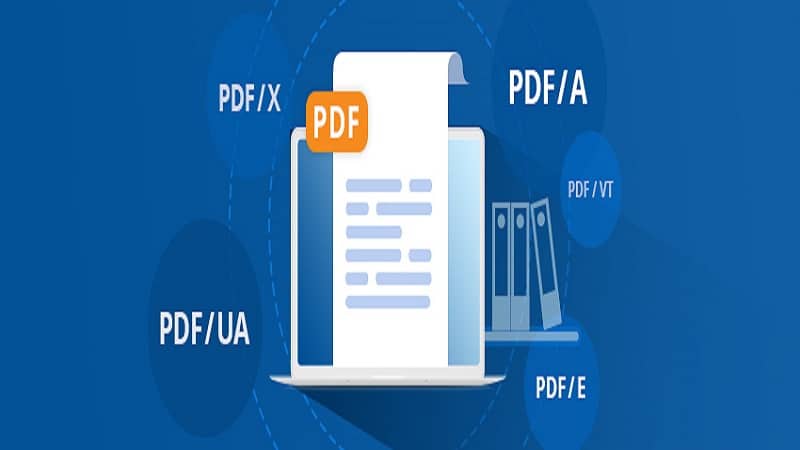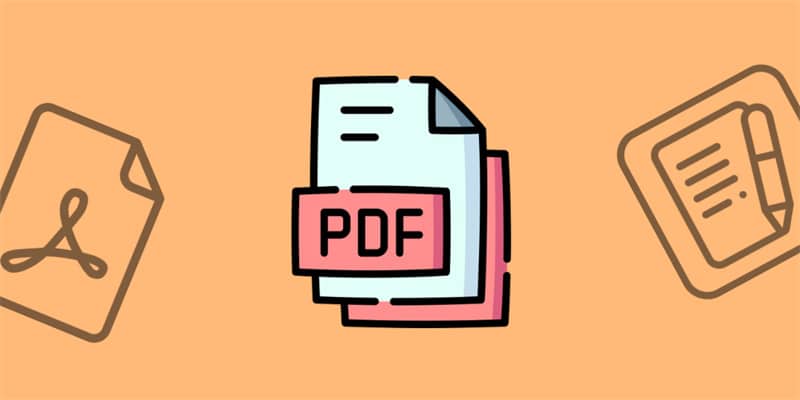
In today's fast-paced digital world, the use of Portable Document Format (PDF) has become ubiquitous.
Whether it's for sharing documents, collaborating on projects, or distributing information, PDFs offer a reliable and versatile format. However, as technology evolves, so do the variations of PDF standards, each tailored to specific purposes.
In this article, we aim to shed light on the dissimilarities among four prominent PDF standards: PDF, PDF/A, PDF/X, and PDF/E. Understanding their unique features and intended applications will empower you to choose the most suitable format for your specific needs, as well as make changes to your online documents. So, let's delve into the fascinating world of PDF variants and gain a comprehensive understanding of what sets them apart.
By the end of this exploration, you'll be equipped with the knowledge necessary to optimize your document handling and ensure compliance with industry standards!
About the Original PDF

PDF, short for Portable Document Format, stands as one of the most widely used document formats in the digital landscape. Developed by Adobe Systems in the early 1990s, PDF was designed to provide a platform-independent way of sharing documents, ensuring that the content's layout and formatting remain consistent across various devices and operating systems.
However, while PDF remains an excellent choice for many scenarios, it may not be the best option in specific contexts that require stricter compliance and specialized functionality. In such cases, other PDF standards, such as PDF/A, PDF/X, and PDF/E, step in to cater to distinct requirements.
In the following sections, we will explore these unique PDF variants, each with its own purpose and relevance in diverse industries. So, let's dive deeper, and uncover their respective strengths and use cases!
Preserving the Past with PDF/A
As technology advances at a rapid pace, ensuring the longevity and accessibility of digital archives becomes paramount. This is where PDF/A, an ISO-standardized version of the PDF format, comes into play. The “A” in PDF/A stands for “Archival,” and its primary objective is to provide a robust, self-contained, and reliable format for long-term preservation of electronic documents.
PDF/A is especially relevant in industries and scenarios where long-term preservation of electronic documents is critical. Some common use cases include:
- Archiving historical records, government documents, and legal contracts
- Preserving scientific research and academic publications for future reference
- Storing financial records and regulatory documents for compliance purposes
- Digitizing libraries and museums to protect cultural heritage
By adhering to stringent archival standards, PDF/A ensures that documents remain readable and retain their original appearance for generations to come. This makes it a valuable format for institutions, organizations, and individuals seeking to safeguard their digital legacy.
In contrast, other PDF variants cater to specific industries and unique needs. In the subsequent sections, we'll delve into the world of PDF/X, which revolves around prepress and printing requirements, and PDF/E, tailored for engineering workflows.
Precision in Print with PDF/X
In the realm of graphic design, prepress, and commercial printing, the PDF/X standard reigns supreme. This specialized PDF variant is tailor-made to address the unique challenges of ensuring accurate and consistent reproduction of documents in the print industry. As the “X” suggests, the focus here is on eXchange – delivering print-ready files that can be easily shared between designers, publishers, and printing houses.
Key Features of PDF/X:
- Color Spaces and Output Intent: PDF/X enforces the use of specific color spaces, such as CMYK or spot colors, to guarantee that the printed output matches the designer's intended colors. It also requires the inclusion of an “output intent” indicating the target printing condition, ensuring color consistency across devices.
- Font Embedding and Subsetting: To prevent font-related issues during printing, PDF/X mandates complete font embedding, ensuring that the recipient has access to the exact fonts used in the document. Additionally, unnecessary font data is often subsetted to optimize file size.
- Image Resolution and Compression: To maintain print quality, PDF/X sets guidelines for image resolution, ensuring that images are of sufficient quality for the intended output. It also restricts the use of lossy image compression methods, preserving image integrity.
- Transparency Handling: PDF/X addresses potential transparency problems during printing by requiring transparency to be flattened, thus preventing unwanted visual effects.
- No External Content: Similar to PDF/A, PDF/X prohibits the use of external content, including hyperlinks and multimedia, reducing the risk of issues during printing.
By adhering to the strict guidelines of PDF/X, businesses and designers can streamline the print workflow, minimize potential errors, and guarantee that the final printed output matches the original vision.
Efficiency in Engineering with PDF/E

In the dynamic world of engineering and technical documentation, effective communication and data exchange are paramount. Enter PDF/E, the specialized PDF standard engineered to meet the distinct needs of the engineering industry. The “E” in PDF/E denotes “Engineering,” and this format facilitates seamless sharing and collaboration of complex technical information.
Key Features of PDF/E:
- 3D Visualization: PDF/E supports 3D data, allowing engineers to embed interactive 3D models directly into the document. This feature enhances visualization and comprehension of complex engineering designs and aids in virtual prototyping.
- Geospatial Data: For projects involving geospatial information, PDF/E supports the integration of GIS (Geographic Information System) data, enabling precise location-based data representation and analysis.
- Layers and Views: PDF/E permits the use of layers and views, which is particularly useful when presenting different aspects of a design or selectively displaying components of a complex technical drawing.
- Interactive Forms: PDF/E can include interactive forms, making it a practical choice for engineering reports, inspection forms, and technical surveys.
- Accurate Print Output: Similar to PDF/X, PDF/E ensures that the intended engineering drawings and schematics are faithfully reproduced in print, preserving the technical accuracy of the original designs.
Conclusion
In this journey through the diverse world of PDF standards, we have explored the strengths and applications of four prominent variants: PDF, PDF/A, PDF/X, and PDF/E. Each format serves a distinct purpose, catering to the needs of various industries and workflows.
PDF remains a universal choice for general document sharing, while PDF/A ensures secure and long-term preservation of digital archives. PDF/X, with its focus on print perfection, is the preferred format in the graphic design and commercial printing sector. Lastly, PDF/E empowers engineering professionals by facilitating the exchange of complex technical data.
We hope this article has shed light on the differences between PDF, PDF/A, PDF/X, and PDF/E, guiding you towards making informed choices in your digital endeavors!










